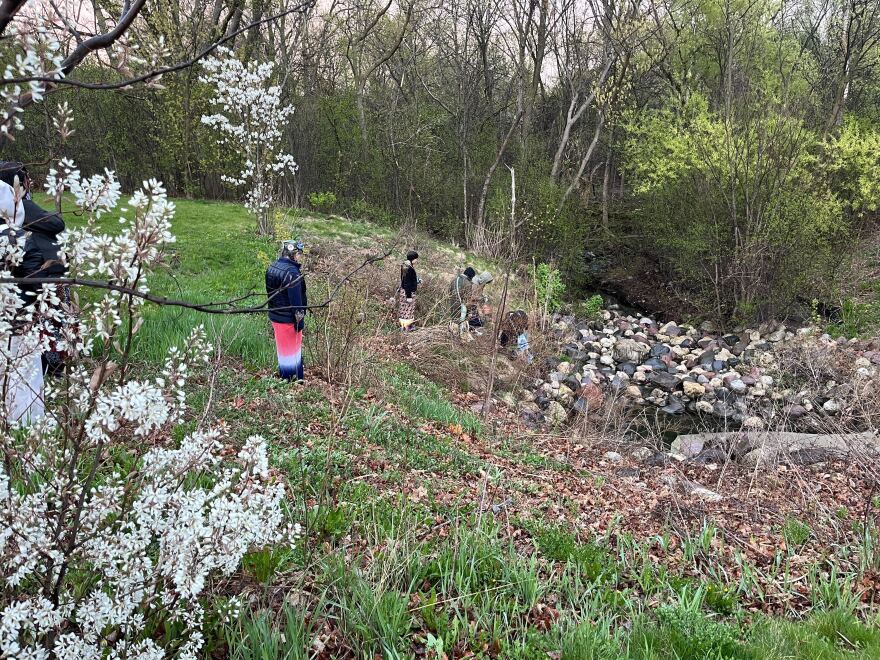It was 5 a.m. when a rainbow greeted a group of around 40 "sturgeon protectors" at Kinnickinnic River Parkway. They were here for a water walk to recognize the sturgeon returning to Milwaukee's waterways.
Mark Denning and Siobhan Marks led the group in an opening water ceremony, to give thanks to the water, and to pray over river water that would be held in a copper pail for the entirety of the seven-mile journey.
They chose the Kinnickinnic River to recognize what has been dubbed Milwaukee’s forgotten waterway.
The Sturgeon Protectors is an Indigenous-led organization that is working to educate Milwaukee residents about the importance of sturgeon. The ancient fish has been making its return to Milwaukee waterways. Their return is seen as a story of endurance, survival and resilience.

Denning, a member of the Oneida Nation and sturgeon clan, explained the role of the sturgeon protectors: “So many of our fishermen in the Milwaukee area have not seen sturgeon. They don't know what they look like. They might run into them and think, what an odd fish, and want to take one home try and figure it out. And the idea is first, of course, preservation through education and to get these fishermen and people who walk the river to be able to look for them, because we believe that to know something is to get to love that something."
Denning said the Sturgeon Protectors want to raise awareness of the fish and educate the public to prevent poaching.
The Wisconsin Department of Natural Resources and other groups have been working for years to bring sturgeon back to Milwaukee waterways.

“We have the little sturgeon and they're raised in their tanks, and they're released into — at least in this area — the Milwaukee River," Denning said. "And so they go into that river that flows into Lake Michigan, and we didn't know if we would see them, because they don't come back right away, but they do return after about 15 to 20 years, and we're in that return cycle right now."
The walk followed the path of the river as it weaved in and out of the urban landscape. A man carries an eagle staff, and a woman carries a copper vessel of water. Reflecting the constant flow of the water, the pair must continuously walk together. It’s a ceremony for the water.

Siobhan Marks, a descendant of the Lac Courte Oreilles band of Lake Superior Chippewa, shared how she sees the sturgeon relating to Native communities in Wisconsin. Sturgeon's homeland has been disrupted by manmade dams, including in Milwaukee and Shawano.
“[In] Shawano, to see that dam that's there and see the sturgeon coming, and they keep trying, they keep trying, and they keep trying, and they beat so hard against the water and the stones, they bloody the noses trying to get past that dam and back home where they can spawn and that life can start anew," Marks said. "So, I see that determination again of our people — that we aren't supposed to be here. We were supposed to be exterminated and through great hardship, we remain still."
The seven-mile walk ended at UWM’s School of Freshwater Sciences. Denning addressed the group, saying that the walk symbolized the return of the sturgeon.
Marks said it’s a lesson about the balance that is needed between us and nature.
“We, in our absurd humanness, I guess, think that we're so superior and smart that we can control the water and circumvent her. But at what cost?" said Marks.
Following the path of the ancient fish and the forgotten river served as a reminder of the resilience of the natural world, and what we can do to help protect it.






